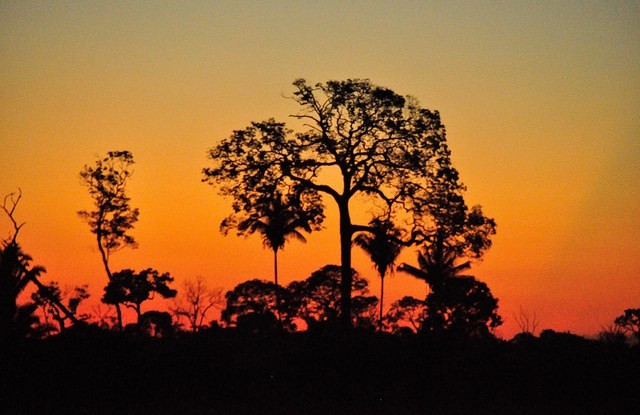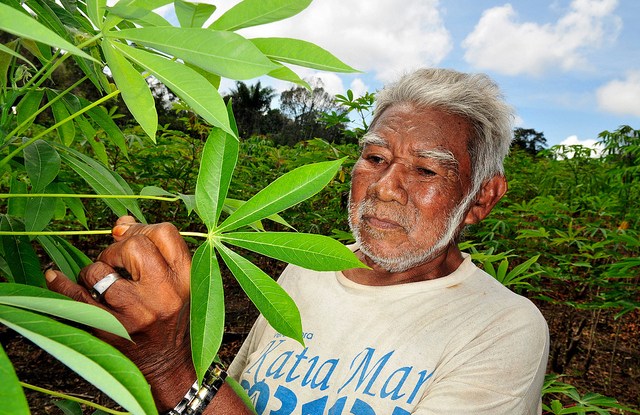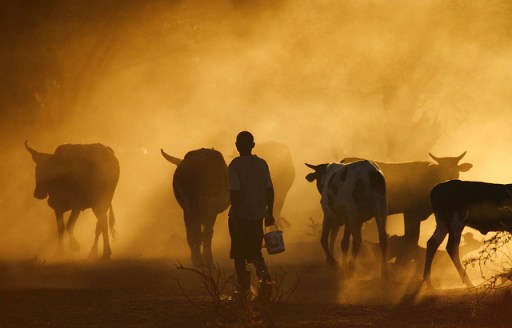
BOGOR, Indonesia—In Brazil’s Amazon forest, incentives such as certification of timber products are less effective than fines and other sanctions aimed at curbing illegal logging and clearing of forests, according to a new study.
“Certification and other incentives for legal timber operations tend to work better when they involve value chains that are well developed and have good links to the markets,” said Pablo Pacheco, a senior scientist at the Center for International Forestry Research (CIFOR) and one of the authors of the study, which examined the topic in Brazil.
“But a significant number of smallholders and communities are not well integrated to those value chains, so there is no incentive for them to embrace certification.”
Countries that import tropical forest products and international organizations such as the Forest Stewardship Council, which sets standards for sustainable timber production, have taken steps to verify the “traceability” of timber from the market to its point of origin in the forest, to ensure that it was not harvested illegally.
But those systems tend to work when applied to wood aimed at export markets, Pacheco says, while smallholders and communities generally sell their timber to local or domestic markets.
Ultimately, he says, most of the pressure on forests that leads to deforestation in the Brazilian Amazon is due not to logging practiced by smallholders or communities, but to clearing of land for agriculture or ranching expansion.
“Smallholders and communities have a minor contribution to total deforestation anyway, so certification is not necessarily an instrument that will contribute to reduce deforestation,” he said. “And even if local users are not certified, that doesn’t mean their practices will lead to increased pressures on forests.”
RELEVANCE AND RECEPTIVENESS
Other recent studies have examined whether “carrots”—incentives such as payments for environmental services—or “sticks”—fines and other sanctions—are most effective for stemming deforestation and forest degradation.
Pacheco and his colleagues looked instead at two interrelated factors. One was sustainability—how well forest production systems protect natural forests and benefit local communities, especially the poorest people, a factor they call “relevance.” The other was how susceptible those production systems—harvesting, processing and sale—are to regulation or other government control, a characteristic they call “receptiveness.”
Their goal was to understand how the increased international emphasis on tracking forest products and verifying their legality—through certification or under laws in importers such as the United States, European Union countries and Australia—influences production systems and sustainability.
TENURE REMAINS AN ISSUE
Between 2000 and 2010, about 169,000 square kilometers of the Brazilian Amazon were deforested, and another 50,800 square kilometers were degraded by fires or the indirect impacts of logging. Most of the deforestation was due to clearing of land for ranching or large-scale agriculture, such as soy production—and timber certification can do little to stem that tide.
The forest is also home to smallholders, many of them living in poverty, who sell trees from their land when they need cash for household expenses or emergencies. That makes forests a high priority not just for conservation, but also because of their social benefits, the researchers say.
In the end, certification is not going to be helpful for communities—or at least not as helpful as theory says it should be
Brazil has made strides in recent years in recognizing land rights, especially for indigenous communities. But it has made little progress on forest concessions for timber production, and in about two-thirds of the forest that is under the greatest threat of deforestation, land rights are still unclear.
Even when smallholders have legal title to their land, they often cannot afford the cost of obtaining certification for their timber. And most do not sell to intermediaries who ship forest products to international buyers interested in verifying the legality of the timber. Instead, they sell locally, in informal markets for domestic consumption.
LOOKING ELSEWHERE FOR SOLUTIONS
Those factors make it difficult for incentives such as certification to contribute to better livelihoods for smallholders, Pacheco says.
“In the end, certification is not going to be helpful for communities, or at least not as helpful as theory says it should be,” he said.
Instead, the timber producers who are most likely to qualify for certification by the Forest Stewardship Council or CERFLOR, a system launched by the wood product industry, are large-scale, intensively managed plantations.
But most of those corporate operations are outside the Amazon, mainly in southern Brazil, so those incentives do little to stop Amazonian deforestation.
Meanwhile, researchers and policy makers are starting to look at a combination of improved regulations and enforcement and incentives, as well as options for certifying agricultural products that originate in practices that do not contribute to destruction in the Amazon, Pacheco says.
For more information about the topics of this research, please contact Pablo Pacheco at p.pacheco@cgiar.org.
This research forms part of the CGIAR Research Program on Forests, Trees and Agroforestry.
We want you to share Forests News content, which is licensed under Creative Commons Attribution-NonCommercial-ShareAlike 4.0 International (CC BY-NC-SA 4.0). This means you are free to redistribute our material for non-commercial purposes. All we ask is that you give Forests News appropriate credit and link to the original Forests News content, indicate if changes were made, and distribute your contributions under the same Creative Commons license. You must notify Forests News if you repost, reprint or reuse our materials by contacting forestsnews@cifor-icraf.org.

